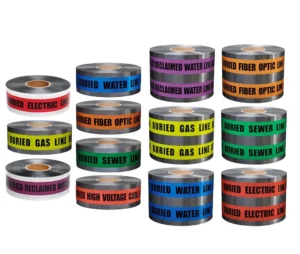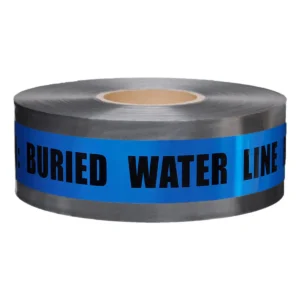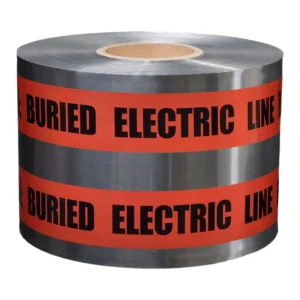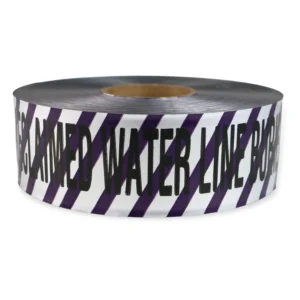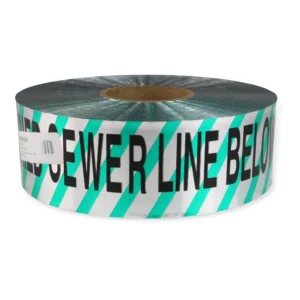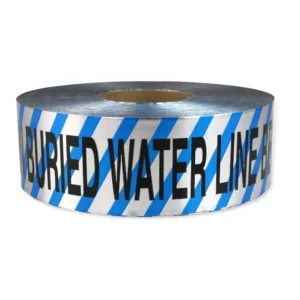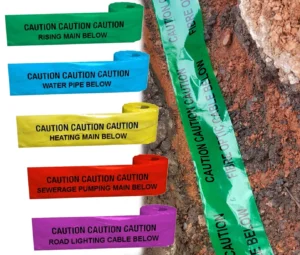Warning tape is the bright, colorful tape you see at construction sites, road work areas, or near danger zones. It tells people to stay away or be careful. Even though it may look simple, it needs to be used correctly to work well. As a company that makes warning tape, we want to show you how to use it the right way so you stay safe and follow the rules.
What Are the Different Types of Warning Tape
There are different kinds of warning tape for different jobs. Non-adhesive barricade tape is the kind you stretch between cones or posts. It doesn’t stick. It’s great for outdoor use like marking off a construction site. Adhesive hazard tape has a sticky back. You stick it to floors or machines. It’s often used indoors in factories or warehouses. Underground warning tape is buried in the ground to show where pipes or cables are located. Some of this tape has metal in it so workers can find it with special tools. Reflective tape is shiny and can be seen in the dark when light hits it. It’s used near roads or dark work areas.
How to Install Non-Adhesive Warning Tape
To install non-adhesive tape, stretch it between cones, poles, or stakes. It should be about waist high so people can see it easily. Tie or wrap the ends tightly so it doesn’t sag or fall. Keep the tape straight and neat so it clearly marks the area.
How to Install Adhesive Hazard Tape
Before sticking down adhesive tape, make sure the surface is clean and dry. There should be no dust, dirt, or oil. Stick the tape down slowly, pressing it as you go. You can use your hands or a small roller to press it down firmly so it sticks well.
How to Install Underground Warning Tape
First, dig a trench and lay your pipe, cable, or wire in the ground. After that, place the warning tape in the trench about 12 inches above the pipe. Then fill in the trench with dirt. Later, if someone digs in that area, they will hit the tape first and know there is something important below.
Tips for Using Warning Tape Correctly
Always use the right color for the job. For example, yellow means caution and red means danger. Replace old tape if it is torn or faded so people can still see it clearly. In busy areas, put up a sign to explain what the tape is for. Store your tape in a cool, dry place to keep it in good condition.
Mistakes to Avoid When Using Warning Tape
Do not use indoor tape outdoors because it might not last in the weather. Make sure to clean surfaces before applying sticky tape or it won’t stay in place. When using underground tape, do not place it too deep or right on top of the pipe. Also, don’t leave the tape loose or hanging. That can be dangerous and hard to see.
Why Safety Rules Matter
There are safety rules that help people know what warning tape means. Groups like OSHA and ANSI create rules for color and use. Following these rules helps protect workers and avoids problems. Our tape is made to meet these safety rules, so you can use it with confidence.
Tools That Can Help With Installation
Some helpful tools for installing tape include a small roller or dispenser, scissors or a knife for cutting, cones or poles for non-sticky tape, and paint for marking underground areas before you dig.
Why You Should Buy From Us
We make our own tape, so we know how strong and reliable it is. We offer custom printed tape if you want your company name or special message on it. Our tape is made to last in tough places like construction zones or factories. We also offer good prices for big orders and fast delivery.
Common Questions About Warning Tape
Some people ask if they can reuse warning tape. You can reuse non-sticky tape if it’s in good shape. Sticky tape usually cannot be reused once removed. Another question is how long warning tape lasts outdoors. Our outdoor tape can last from six months to a year depending on the weather. Some people ask about the difference between detectable and regular underground tape. Detectable tape has metal inside so it can be found using special tools. Regular tape cannot be detected this way.
What’s our final take
Warning tape is easy to use if you follow the right steps. Now you know how to choose the right kind, how to install it, and how to avoid common mistakes. Whether you’re working on a road, building site, or laying pipes, warning tape helps keep people safe. If you need strong, trusted warning tape, contact us today or check out our full collection of products.

